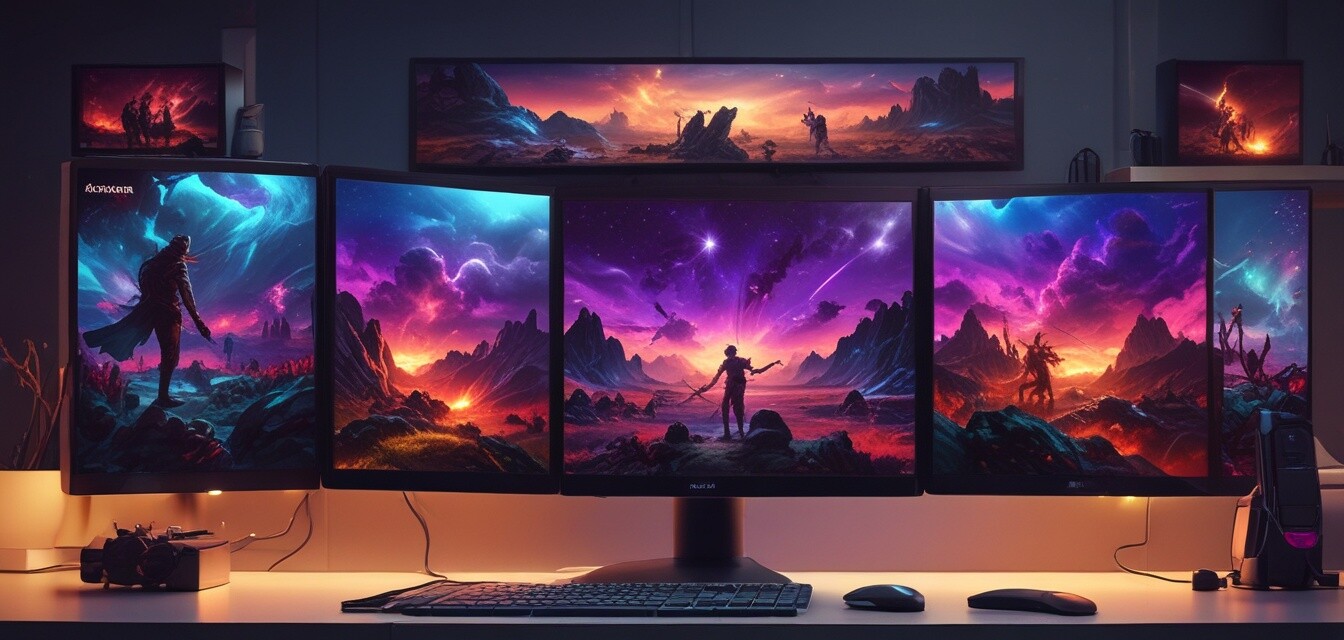
OLED vs. LCD vs. LED: Which is Best for Gaming?
Key Takeaways
- OLED monitors: Offer deeper blacks and vibrant colors but can be prone to burn-in.
- LCD monitors: Generally more affordable and have a wide range of options, including TN and IPS panels.
- LED monitors: Provide good brightness and color but may not match the deep blacks of OLED.
- Choose a monitor based on your gaming preferences, space, and budget.
As the world of gaming constantly evolves, so too do the displays on which we enjoy our favorite titles. Whether you’re a casual player or an esports enthusiast, choosing the right monitor is crucial for an immersive experience. In this article, we'll dive into the features and benefits of OLED, LCD, and LED monitors to help you determine which is best suited for your gaming needs.
Understanding the Types of Displays
Each display technology comes with its own strengths and weaknesses. Let’s take a closer look at each.
OLED Monitors
Organic Light Emitting Diode (OLED) monitors use a significantly different approach, utilizing organic compounds that emit light when an electric current is applied.
- Benefits:
- Exceptional color accuracy and vibrancy
- True blacks due to pixels self-illuminating
- Wide viewing angles
- Drawbacks:
- Risk of burn-in with static images
- Higher price point
LCD Monitors
Liquid Crystal Display (LCD) monitors are more common and can be found in various types, including TN (twisted nematic) and IPS (in-plane switching).
- Benefits:
- More affordable and accessible
- Variety of options in terms of refresh rates and response times
- Drawbacks:
- Lower contrast ratio compared to OLED
- Possible color shifting from different angles
LED Monitors
LED monitors are essentially LCDs that use LED backlighting instead of traditional fluorescent lighting.
- Benefits:
- Energy-efficient with good brightness levels
- Improved color and image quality over standard LCDs
- Drawbacks:
- Limited contrast ratios compared to OLED
- Still suffers from viewing angle issues
Gaming Performance Comparison
Now that we understand the fundamentals, let’s compare these types of monitors based on gaming performance.
| Feature | OLED | LCD | LED |
|---|---|---|---|
| Color Accuracy | Excellent | Good | Fair |
| Response Time | Fast | Variable | Variable |
| Refresh Rate | Good (up to 240Hz) | Good (up to 240Hz) | Good (up to 240Hz) |
| Viewing Angles | Very Wide | Narrow to Moderate | Narrow to Moderate |
| Price | High | Low to Moderate | Low to Moderate |
Which is Best for Your Gaming Needs?
Your choice will depend entirely on your gaming habits, budget, and space. Here are some situations where you might prefer one technology over another:
- If you play:
- Fast-paced games (FPS, Racing) - Consider OLED for rapid response times and vibrant visuals.
- Single-player narrative games - OLED can provide a more immersive experience due to superior colors.
- Competitive gaming - High refresh rate LCDs are also an excellent choice for fast-paced action without the risk of burn-in.
Conclusion
Choosing the right gaming monitor can elevate your gaming experience significantly. OLED monitors excel in color accuracy and contrast, while LCDs and LEDs provide budget-friendly options with a variety of features. Ultimately, the best choice depends on your preferences, games you play, and budget constraints.
Pros
- OLED monitors have unmatched color and contrast ratios.
- LCD monitors offer a wide range of specifications with good performance.
- LED monitors are energy-efficient and affordable.
Cons
- OLEDs can suffer from burn-in.
- Some LCDs have varying performance depending on panel type.
- LEDs may not provide the best color accuracy.
Beginners Section
For gamers just starting to explore monitor options, consider your primary gaming genres, your budget, and space available. If you're still unsure, check our Buying Guides section for more insights!
Explore More
Want to dive deeper into the world of gaming monitors? Check out our other articles: